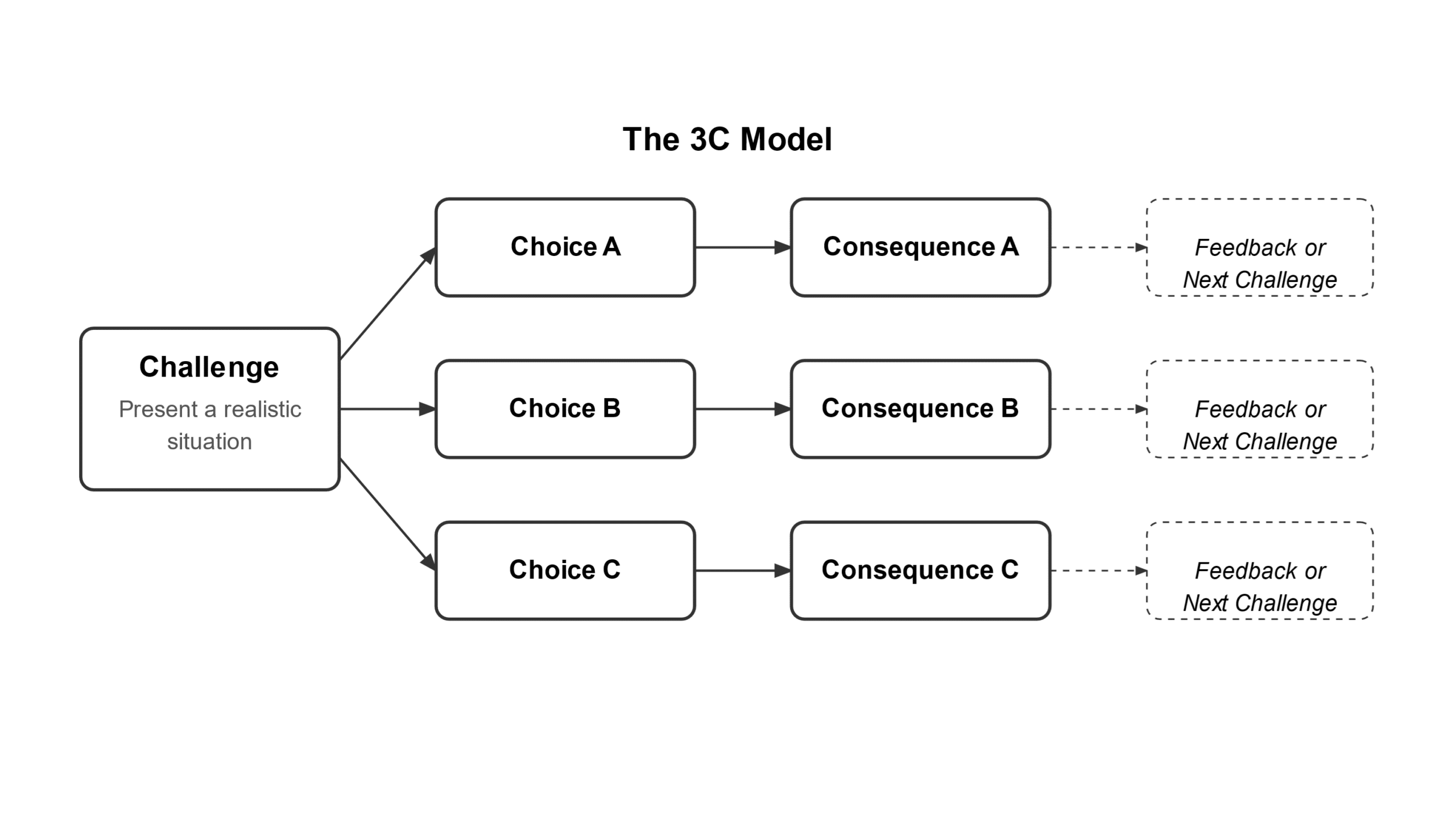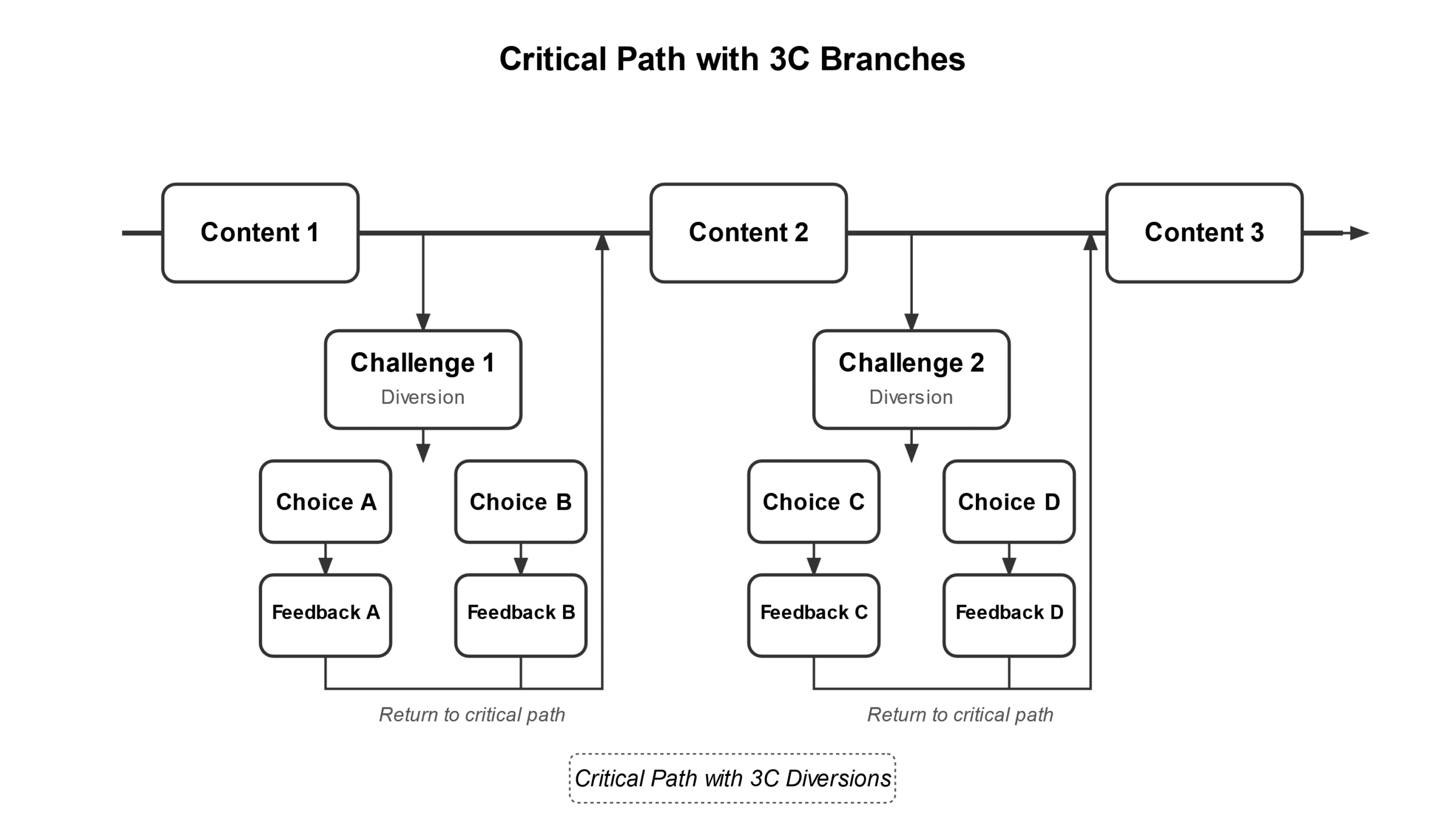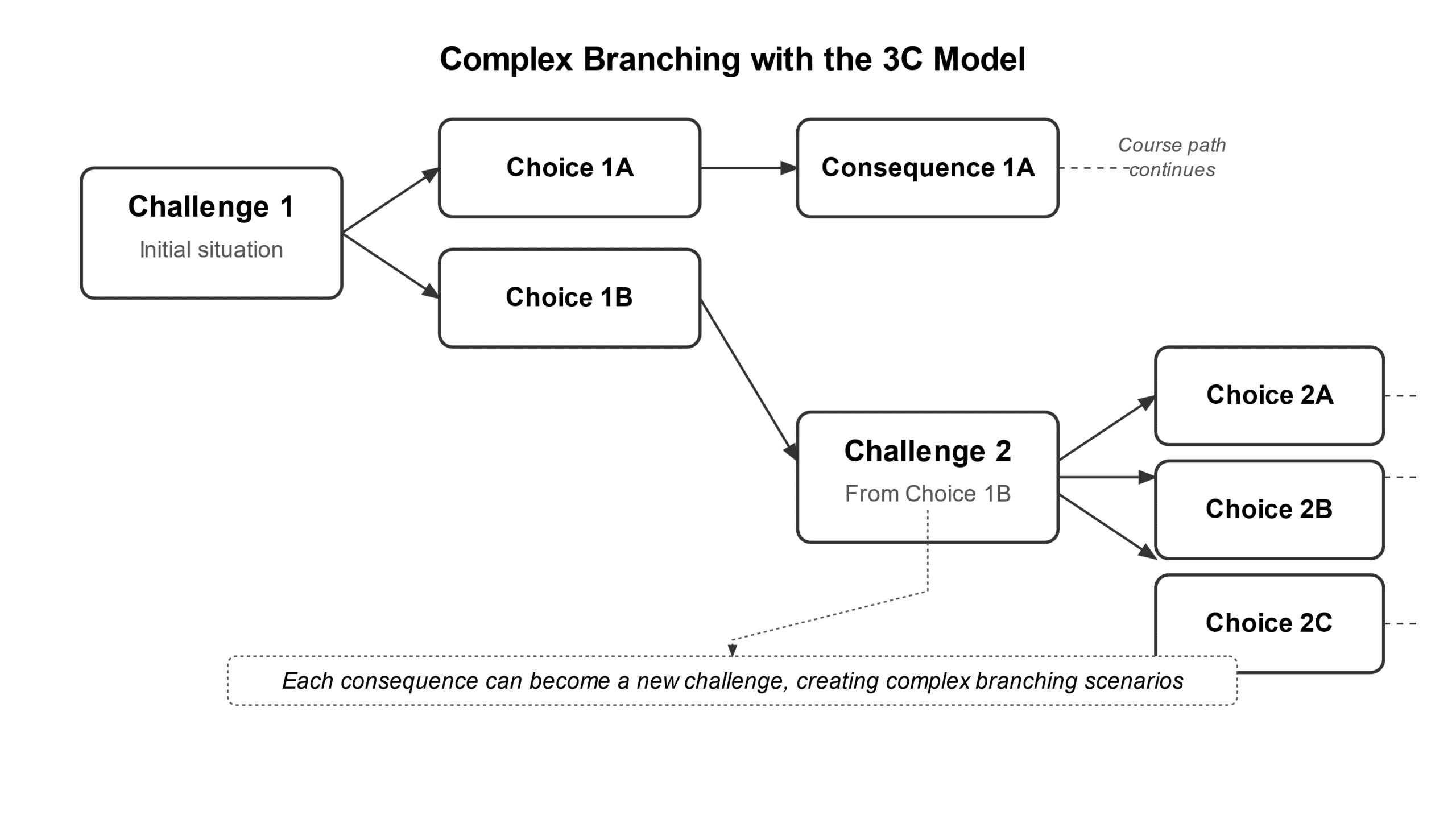Build Interactive Scenarios With The Simple 3C Framework
Build interactive branched scenarios easily with the 3C model: Challenge, Choices, and Consequences. Transform your linear courses into engaging learning experiences.

Create engaging scenarios with proven building blocks
I’ve written extensively about the 3C model over the years since introducing it on the Rapid E-Learning blog in 2009. So this content isn’t exactly new, but now seems like a perfect time to revisit this framework because it continues to offer tremendous value for today’s instructional designers.
Interactive branched scenarios enhance your e-learning courses by engaging learners in realistic decision-making experiences. You can create these powerful learning tools using simple building blocks—no complex programming required.
Understanding the 3C model for scenario building
I created the 3C model way back in the late 1990s while training beginning course developers who had minimal experience building training courses. I wanted to give them a simple framework to think through interactive scenarios and any decision-based e-learning.
Back then building a course was much more complicated than it is today. So I wanted the course designers to not worry about complicated programming in HTML, Flash, and with variables and have them just think about the process of making decisions and getting feedback.
When I introduced this model in the Rapid E-Learning blog in 2009, it resonated with many instructional designers. The model simplifies scenario creation by breaking it down into three simple components:
- Challenge: Start by presenting your learner with a challenge that tests their understanding.
- Choices: Then offer choices that represent different possible responses.
- Consequences: Finally, show consequences that naturally result from each choice.
This streamlined approach helps you focus on creating meaningful learning experiences rather than struggling with technical complications of authoring tools.

The structure works equally well for simple formative assessments or complex narrative-driven courses.
Building scenario complexity strategically
Transform a basic 3C structure into a more complex learning experience by linking multiple decision points. After presenting the initial consequences, you can either provide feedback and move on or immediately introduce another challenge based on the previous decision.
In the example below, the learner remains on a critical path in the course. However, at certain points their understanding of the content is challenged using the 3C model and from there they are diverted back to the critical path.

This is the easiest to build because it doesn’t require a lot of programming complexity, generally does the job intended, and for the learner, seems more complex than it is.
The 3C model can be attached to other 3C models to create unlimited branching and decision-making complexity. Just add a 3C as a consequence and take it from there. Keep in mind, the more complex the branching, the more nuanced the decisions. You really need access to a subject matter expert, if that’s not you.

This approach allows you to create decision trees that reflect real-world complexity while maintaining a manageable development process. Based on your learning objectives and available resources, you control how simple or intricate your scenarios become.
Focusing on learning value, not just interactivity
It’s easy to get caught up in the novelty of a branched scenario. It’s important to create scenarios that serve a clear learning purpose rather than adding interactivity for its own sake. Consider whether the branching experience truly enhances learning compared to more direct instruction. If you can effectively convey the same information in a simple statement, a complex scenario might unnecessarily burden your learners.
Your scenarios should require meaningful decisions that reflect genuine workplace challenges. Avoid creating obvious choices or forcing learners to click through irrelevant options just to appear interactive. Respect your learners’ time by ensuring each interaction contributes to their learning.
Key takeaways: putting the 3C model into practice
The 3C model offers a straightforward approach to creating interactive scenarios without advanced programming skills. Start by developing reusable templates with the Challenge-Choices-Consequences structure, then customize them for specific learning situations. Focus on creating meaningful decision points that reflect genuine workplace challenges, and vary your visual presentation to maintain learner engagement. Begin with simple scenarios to build your confidence, then gradually increase complexity as you develop your skills.
You may also like

ILT (Instructor-Led Training): Everything You Need to Know
ILT brings learning to life through real-time feedback, social interaction, and blended approaches that keep learners engaged and knowledge retained.

